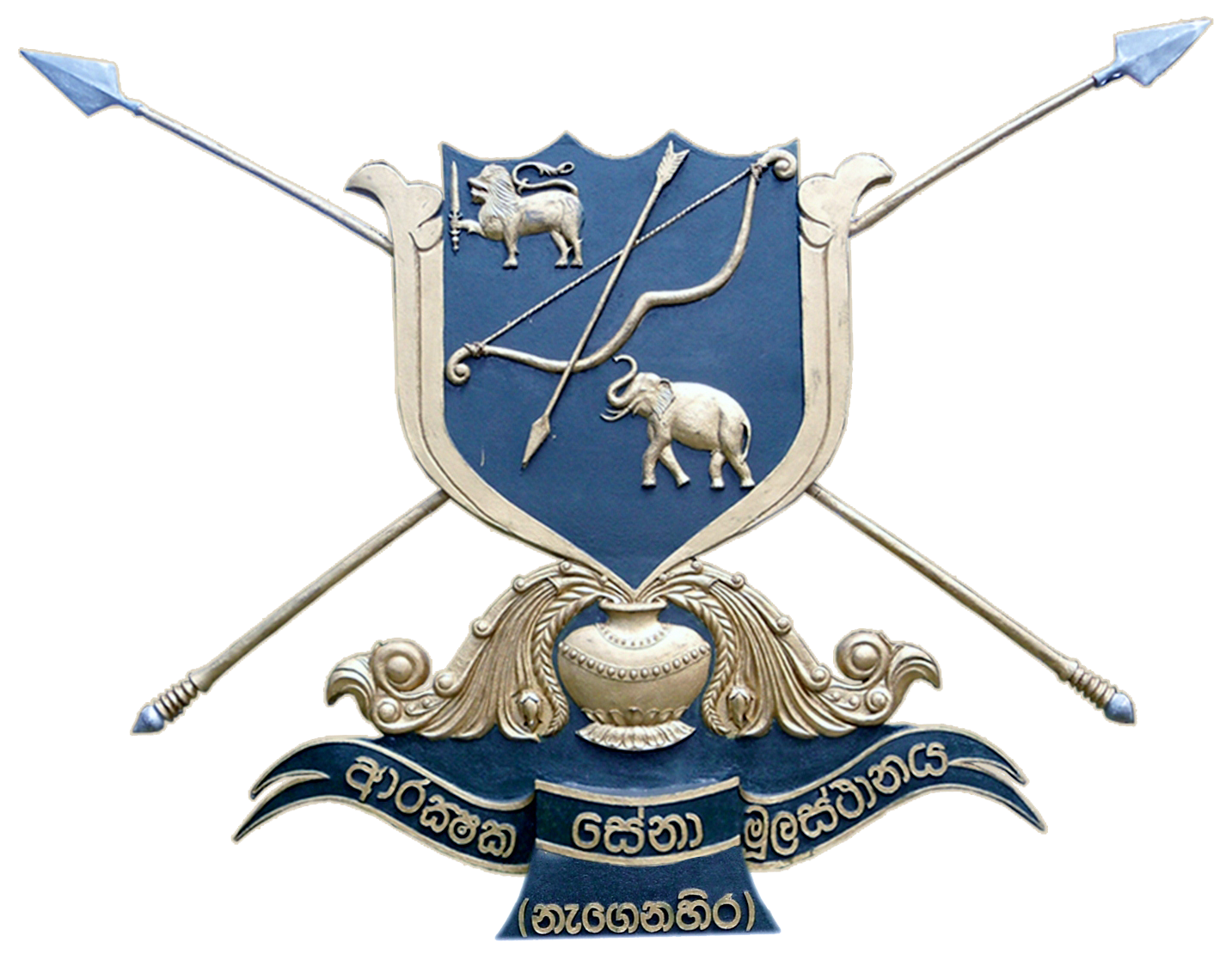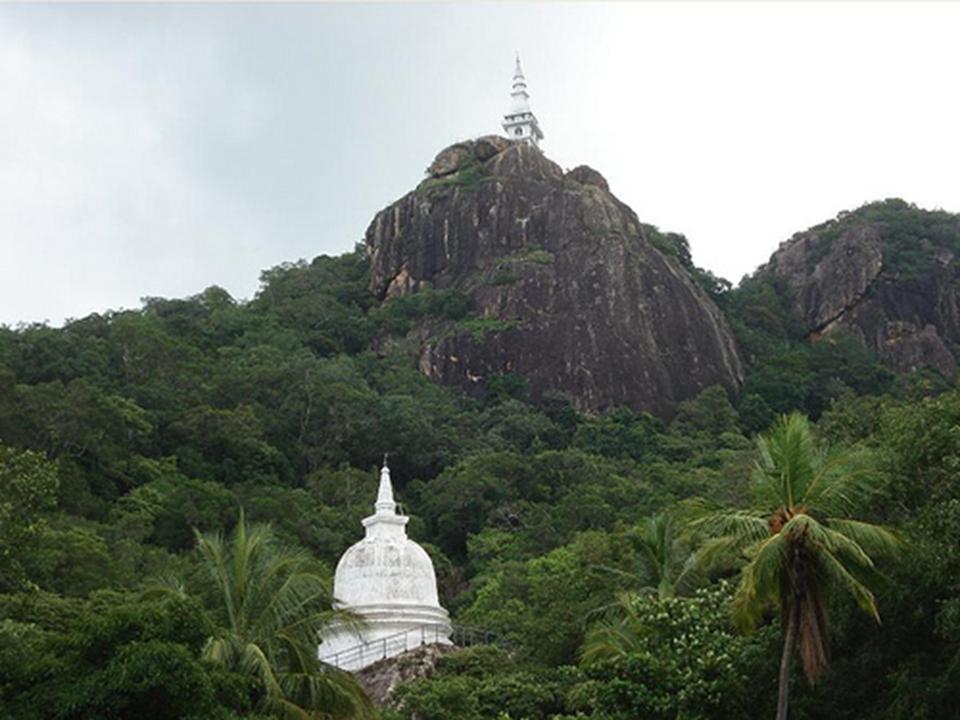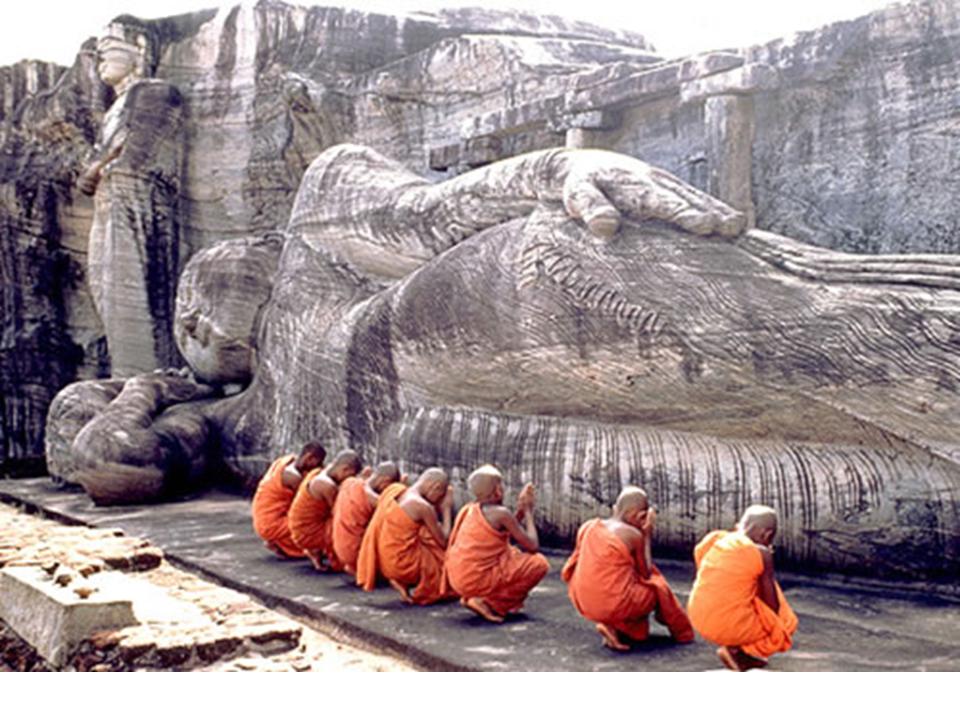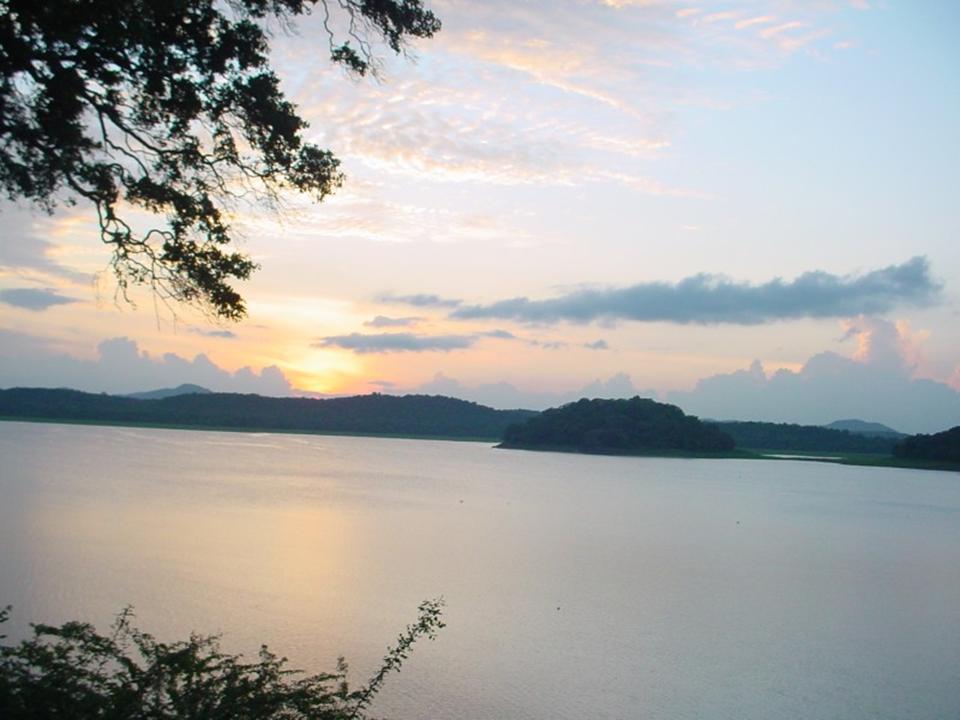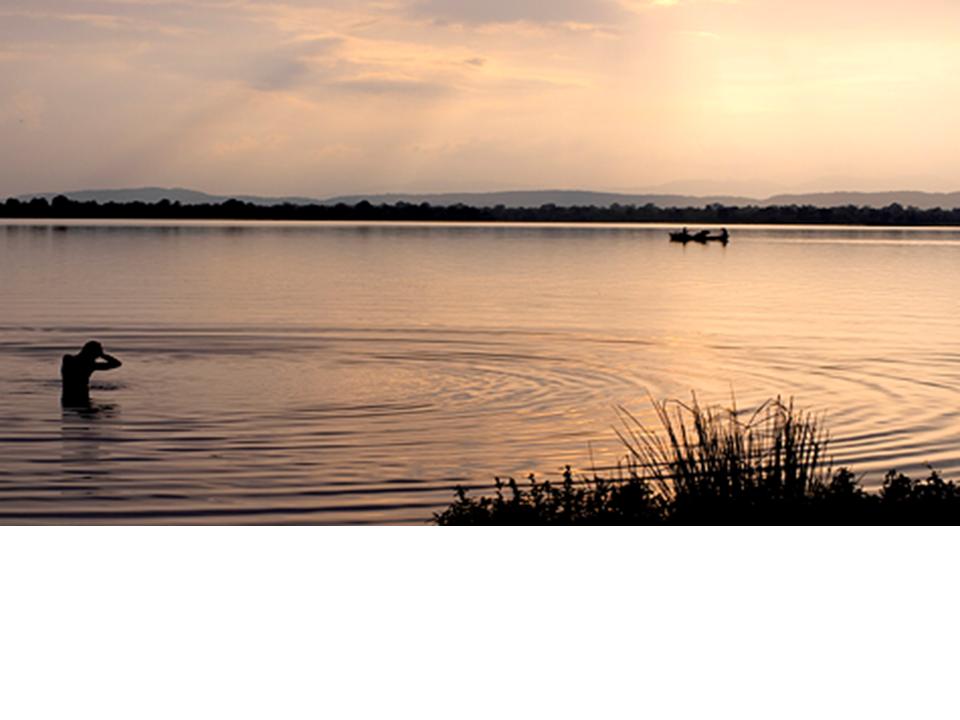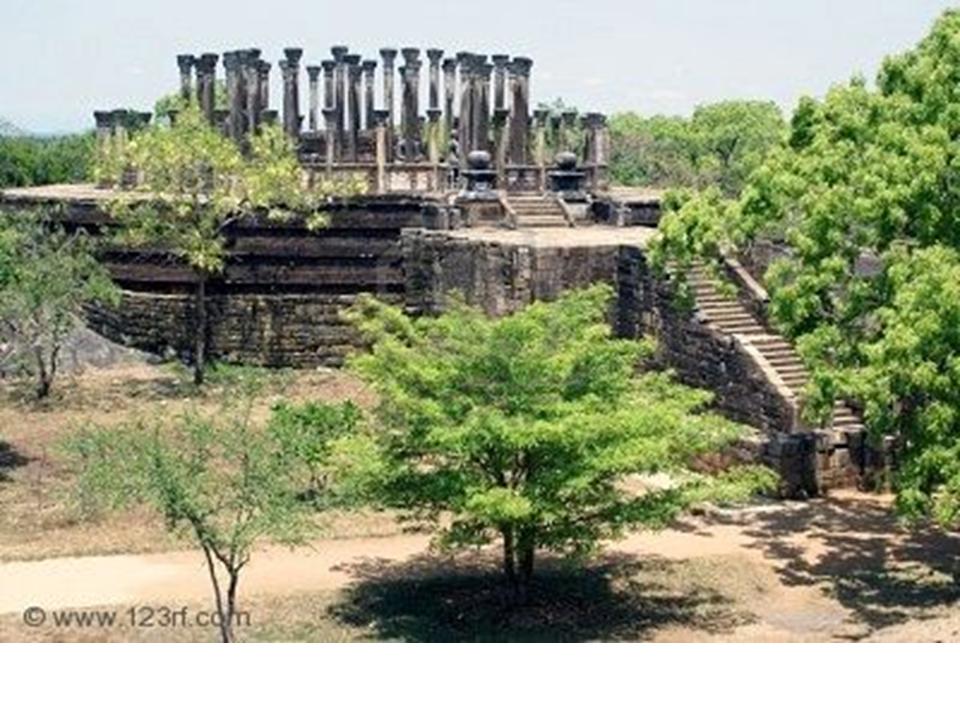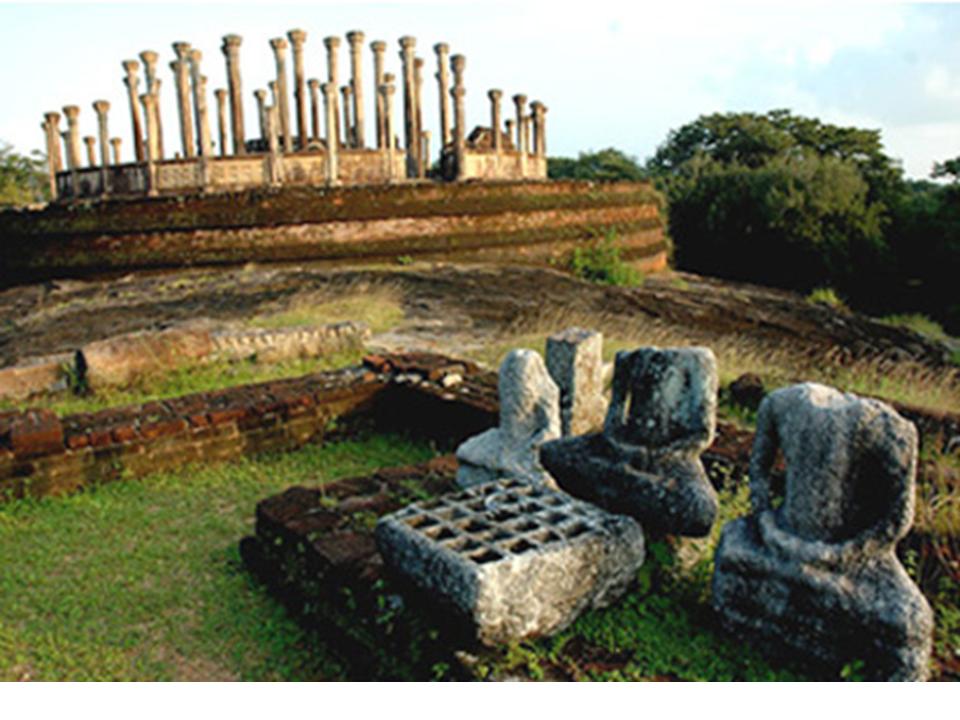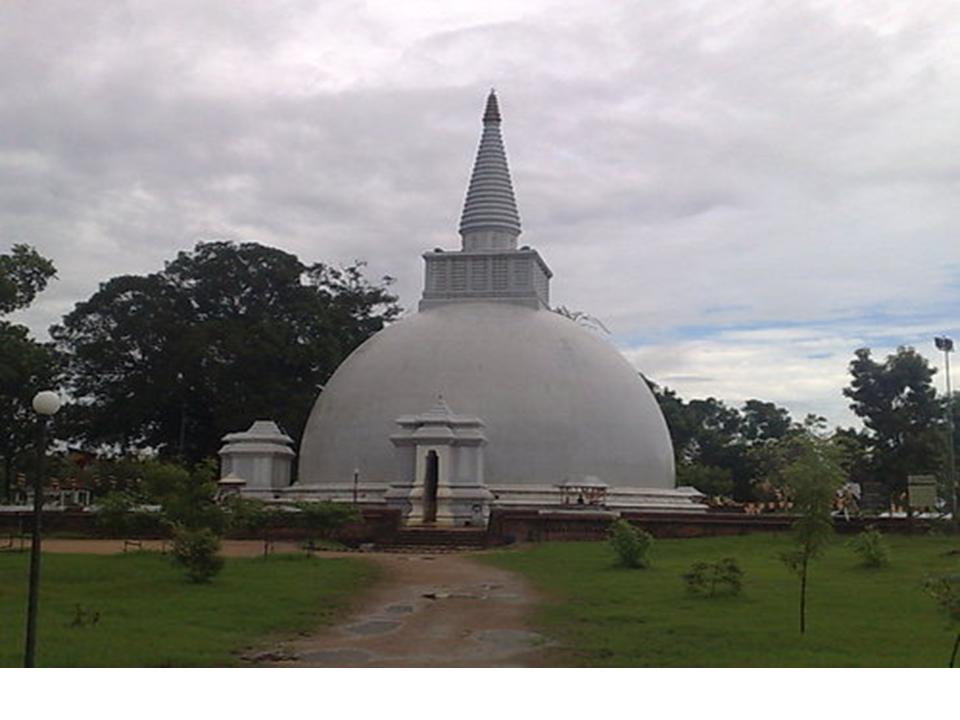DIMBULAGALA RAJA MAHA VIHARA
Dimbulagala Raja Maha Vihara is situated 16 kilometres south east of the ancient city of Polonnaruwa, Sri Lanka. The Dimbulagala range houses a number of caves cut into the rock with Brahmi inscriptions over their drip ledges. This forest hermitage of medieval times and holy abode since time immemorial, home to some of the most valued fragments of early frescoes was called the Gunners Quoin by the British. (Distance - 24 Km from Polonnaruwa Town)
GAL VIHARA
The Gal Vihara, also known as Gal Viharaya, is a rock temple of the Buddha situated in the ancient city of Polonnaruwa in north-central Sri Lanka. It was constructed in the 12th century by Parakramabahu I. The central feature of the shrine are four images of the Buddha, which have been carved into the face of a large granite rock. The images consist of a large seated figure, another, smaller seated figure inside an artificial cavern, and standing figure and a reclining figure. These are considered to be some of the best examples of ancient Sinhalese sculpting and carving arts, and have made the Gal Vihara one of the most visited monuments in Polonnaruwa. (Distance - 4.5 km from Polonnaruwa Town)
GIRITALE TANK
This beautiful tank is situated along Polonnaruwa Habrana Road. It is the work of King Agbo ii who reigned in the 7th century.. A large area of paddy lands are fed by this tank. (Distance - 16.5 km from Polonnaruwa Town)
PARAKRAMA SAMUDRA
The huge lake upon whose northeastern shore Polonnaruwa rests is an inland sea known as the Parakrama Samudra. The largest irrigation tank of Parakramabahu I. It was the life-blood of the ancient city in the same way that it is the blood life of the religion today, providing water for the growth of thirsty rice crops and other foodstuffs. Its 5,600 acres of water irrigated an estimated 18,200 acres of paddy land.
Five minor lakes were incorporated in the building of the Parakrama Samudra, whose 8 1/2- mile bund contains 4 1/2 million cubic yards of earth. One thousand men employed in the hand labor of the period, working 24 hours a day. could scarcely have completed the job in 12 years. he vast water reservoir was built by King Parakramabahu (1153-1186) and today what you see as the Parakrama Samudraya is only a portion of his original creation.Parakrama Samudraya originally consisted of five large reservoirs separated by smaller dams to reduce the pressure on the main dam. Many smaller tanks has been built around the main tank to feed these primary tanks and to take excess water. The main five reservoirs which consist of the Parakrama Samudraya areThopa Vawa, Eramudu Vewa (Katu Vewa), Dumbuthulu Vewa, Kalahagala Vewa, Bhu Vewa. (Distance - 9 km from Polonnaruwa Town)
MEDIRIGIRIYA WATADAGE
This site situated in a beautiful surrounding has a history going in to the pre-Christian times. The brami characters found on the bricks and the some of the stone carvings is an indication of the long history of this site. The first reference to this site in the chronicles is during the king Kanittha Tissa (192-194) of the Anuradhapura Era. Later many kings have contributed to this complex and finally after the invasion of Maga this site too was abandoned when the Sinhalese migrated to the southern parts unable to withstand the torture. This site was later discovered in 1897 in the middle of a thick jungle by Mr H.C.P Bell and he immediately realised the importance of the site calling it an architectural jewel. Initially the restoration work was done by mainly Muslim labourers as the Buddhist labourers did not want to work at a Buddhist temple for money. This they felt was a sin. This restoration work was finally completed in 1945 and was open to the public giving a glimpse of what this temple would have looked over 1000 years ago. (Distance - 32 km from Polonnaruwa Town)
SOMAWATHI CHAITHYA
The Somawathi Chaithya is located by the bank of the Mahaveli River within the Sanctuary named after it and nearly 20 km north east of Polonnaruwa. The flood plains of Mahaveli River have been inhibited by a large number of wild animals ranging from elephants, wild buffalo, deer and other grass-eating animals fed by the luxuriously growing grasslands. The animals are protected by the declaration of Wasgomuwa Strict Natural Reserve, Flood Plains National Park, Trikonamadu Natural Reserve and the Somawathi Chaithya Sanctuary all located to embrace low laying banks of the mighty river. The ancient place of Buddhist worship lying within the Polonnaruwa District was a casualty of war and had been deserted for 15 years. When the villagers and the temple priest flew the area in fear, the restoration work of the Chaithya had to be abandoned.
Five years ago, it was reported that the Pinnacle Gem of the Dagoba (Chuda Manikyaya) was missing and feared to have been stolen. But recently the villagers who cleared the Dagoba compound found the Pinnacle Gem in the nearby thicket. The Department of Archaeology states that most likely the Gem would have fallen off the pinnacle due to corrosion. The Dagoba and the temple that was deserted for 15 long years have been spared of being ravaged.
The proud Sri Lankan cultural heritage is intimately linked to the Wewa and Dagaba (Stupa), symbolising the twin heritage we have in Sri Lanka - a glorious series of stupas and reservoirs. Nestling on the banks of the Mahaweli Ganga (The River of Great Sands) is the historical Somawathie Chetiya in Polonnaruwa where Lord Buddha’s right Tooth Relic is enshrined. Ancient chronicles of Sri Lanka state that the very first Arahant of this country Ven. Aritta, visited the abode of Gods and brought back to Sri Lanka the Sacred Right Tooth of the Enlightened One. This Holy Relic was handed over, in turn, to king Giri Abha and his consort Queen Somawathie who was King Kavantissa’s sister. Queen Somawathie had a yearning to construct a Stupa in adoration of the Buddha. (Distance - 38.9 km from Polonnaruwa Town)
